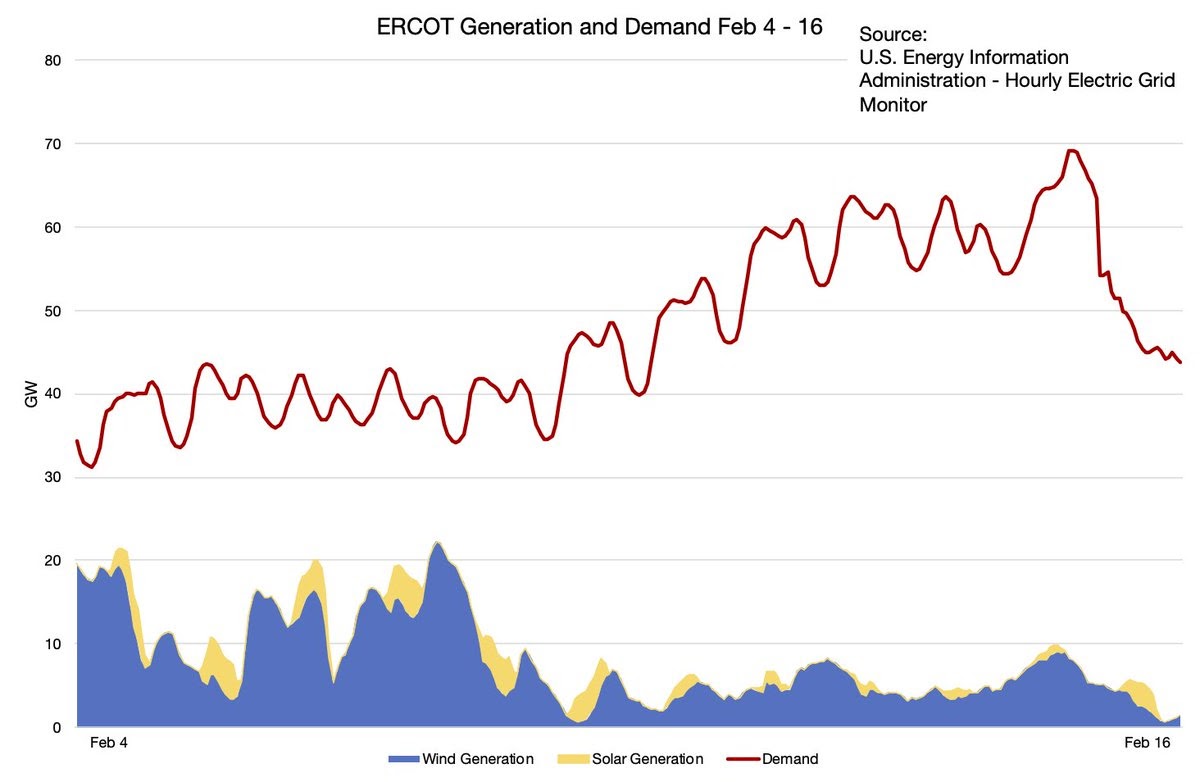Quick Summary
The House Democrats' "CLEAN Future" Act, by forcing us to depend mostly on unreliable wind and solar, would destroy our standard of living--and global emissions would still rise. It should be rejected in favor of an aggressive nuclear decriminalization policy.
- The only practical way to lower global CO2 emissions is to develop low-carbon sources that are cheaper than fossil fuels. If the US, which causes <1/6 of global emissions, mandates unaffordable low-carbon sources, we'll hurt ourselves--while global CO2 emissions continue rising.1
- The world, especially the developing world, overwhelmingly uses fossil fuels because that is by far the lowest-cost way for them to get reliable energy. Unreliable solar and wind can’t come close. That’s why China and India have committed to building hundreds of new coal plants.2
- Unreliable wind and solar cannot compete with fossil fuels. Because they can always go near zero--as we saw recently in Texas--they don't replace the cost of reliable power plants, they add to the cost of reliable power plants. That's why more wind and solar = higher prices.3
- The only non-carbon energy source that has a chance of outcompeting fossil fuels and lowering global emissions is nuclear energy. Nuclear is incredibly safe, incredibly reliable, and can be generated anywhere in the world. And it can be produced at low cost.4
- Unfortunately, nuclear has become ultra-expensive in the US because politicians (mostly Dems) have demonized it and virtually criminalized it through endless unscientific regulations--along with wind/solar favors+subsidies, like the "PTC," that defund reliable nuclear plants.5
- US policy is so anti-nuclear that virtually no one will attempt to build a nuclear plant in this country--and this year utilities are planning to shut down a record amount of our existing low-carbon, low-cost, reliable nuclear power plants!6
- Any policy serious about CO2 emissions needs to recognize the severe deficiencies of wind/solar and *make nuclear decriminalization priorities number 1, 2, and 3*. Instead, the Democrat-led Energy & Commerce Committee has proposed mandating catastrophic amounts of wind and solar.
- The "CLEAN Future" Act mandates 80% "clean electricity” by 2030--but does nothing substantial to reverse the criminalization and defunding of nuclear. So nuclear will decrease from its 20% share today. Hydro, at <7% today, has little room for growth. That means >50% wind/solar!7
- Consider: Germans, to get 37% of their electricity from wind/solar, have doubled their prices--now 3X US prices. And US prices are already inflated, along with big reliability problems, at 10% wind/solar. This is what we're supposed to quintuple down on in 9 years??8
- During TX's recent cold spell, wind and solar disappeared when they were needed the most. Its expensive batteries, which can store a mere 40 seconds, didn’t help, either. What the hell would they have done under the CLEAN Future Act?9

- The US adopting anything like the CLEAN Future Act would lead to a far more extreme version of the outcomes we are seeing globally with wind/solar schemes: driving up electricity costs, harming economies, destroying domestic industries, and harming consumers. And for what?
- The only benefit from the suicidal CLEAN Future Act would be to China, which thanks in large part to its 85% fossil fuel energy system dominates the mining, processing, and manufacturing of wind/solar components. China will be happy to sell us even more inferior energy.10
- By forcing Americans to use unreliable solar and wind, the CLEAN Future Act won’t stop global CO2 levels from rising, because China and others won’t be stupid enough to follow suit. The only thing it will bring about is an economic and security crisis in America.
- Anyone who cares about human life, America, and rising CO2 levels has a clear path forward: support the decriminalization of nuclear, the only hope for globally competitive low-carbon energy. And reject suicidal policies like the CLEAN Future Act.
References
-
The U.S. Energy Information Administration in its reference case projects an overall increase of CO2 emissions for the world while America continues to reduce emissions slightly. As of 2017 US CO2 emissions were less than 15% of the global total.
U.S. EIA International Energy Outlook 2019 reference caseThe largest increase in energy consumption is projected to come from non-OECD countries, but this might be underestimating future growth potential for the poorest regions in Africa.
U.S. EIA International Energy Outlook 2019 reference case
U.S. Environmental Protection Agency - Global Greenhouse Gas Emissions Data↩ -
As of January 2021, China and India are planning or constructing over 280 new coal-fired power plants with a combined capacity of over 300 GW.
Global energy Monitor - Global Coal Plant Tracker↩ -
A prime example of this is Germany, where policies similar to US federal and state policies have lead to a significant increase in electricity generation from solar and wind since 2000:
Public generation of electricity was over 488 terawatt-hours in Germany for 2020, solar and wind combined generated over 37%. In 2002 they generated just over 3%.
Fraunhofer ISE energy-charts.deGerman household electricity prices have more than doubled to over 0.3€ per kWh ($0.35 per kWh depending on currency exchange rate) since 2000 when the modern renewable energy law started to massively incentivize solar and wind capacity on the German grid.
BDEW Strompreisanalyse Jan 2021 p. 7The average US household price in 2018 was $0.1301 per kWh.
U.S. Energy Information Administration Electric Power Annual table 5a↩ -
Nuclear energy is statistically the safest form of energy production by a wide margin, regardless of whether one takes into account speculative health impacts from air pollution, which nuclear technology does not create. No other relevant technologies cause so few casualties per unit of energy produced.
World Nuclear Association - Safety of Nuclear Power Reactors
Lovering et al. (2016) - Historical construction costs of global nuclear power reactors↩ -
U.S. House Committee on Energy & Commerce, March 2, 2021
U.S. Energy Information Administration - Electric Power Annual table 3.1.A↩
-
Public generation of electricity was over 488 terawatt-hours in Germany for 2020, solar and wind combined generated over 37%. In 2002 they generated just over 3%.
Fraunhofer ISE energy-charts.deGerman household electricity prices have more than doubled to over 0.3€ per kWh ($0.35 per kWh depending on currency exchange rate) since 2000 when the modern renewable energy law started to massively incentivize solar and wind capacity on the German grid.
BDEW Strompreisanalyse Jan 2021 p. 7The average US household price in 2018 was $0.1301 per kWh.
U.S. Energy Information Administration Electric Power Annual table 5↩ -
U.S. Energy Information Administration - Hourly Electric Grid Monitor↩
-
China’s primary energy consumption from coal, oil, and natural gas was over 85% of the total in 2019.
BP Statistical Review of World Energy 2020China has a tight grip on many critical minerals in the rare earth category, controlling the mining of a large share and processing of close to 100% of them.
Power Hour - Maxwell Goldberg on Our Dangerous Material Dependence on ChinaInvestingnews.com - 10 Top Countries for Rare Earth Metal Production
Defensenews.com - The collapse of American rare earth mining — and lessons learned↩
